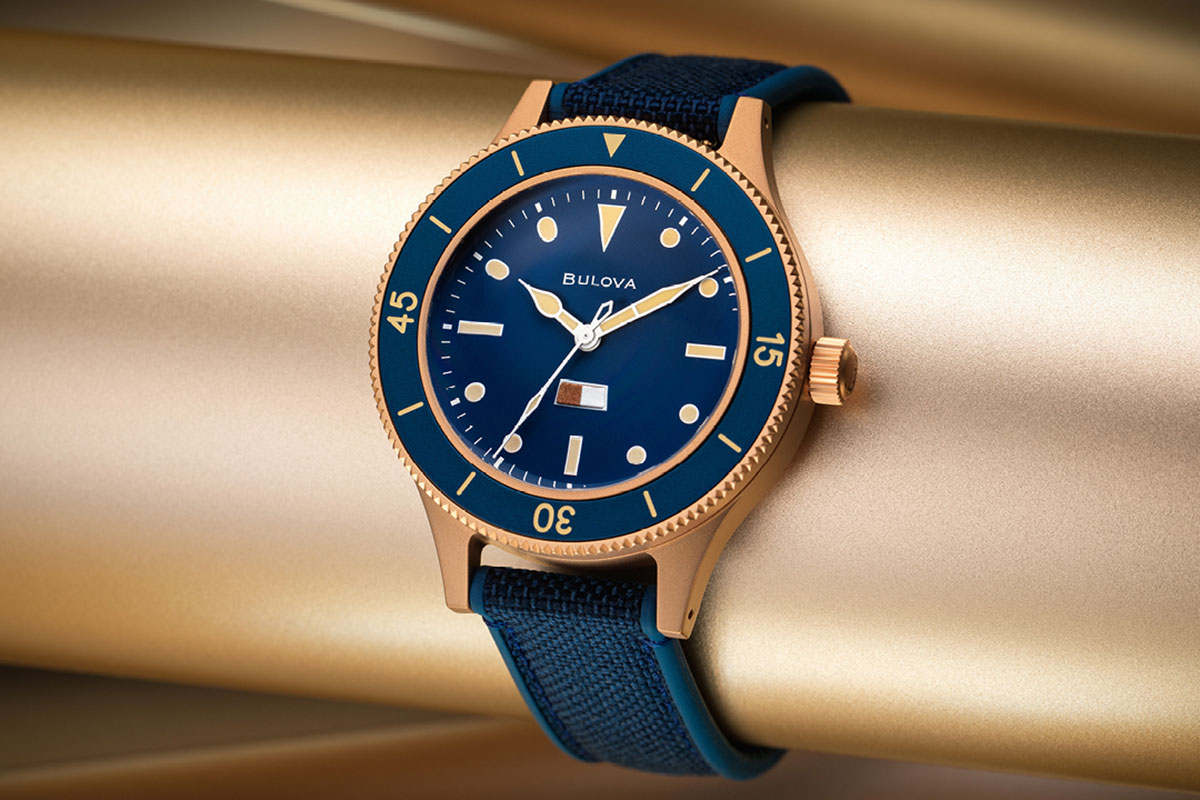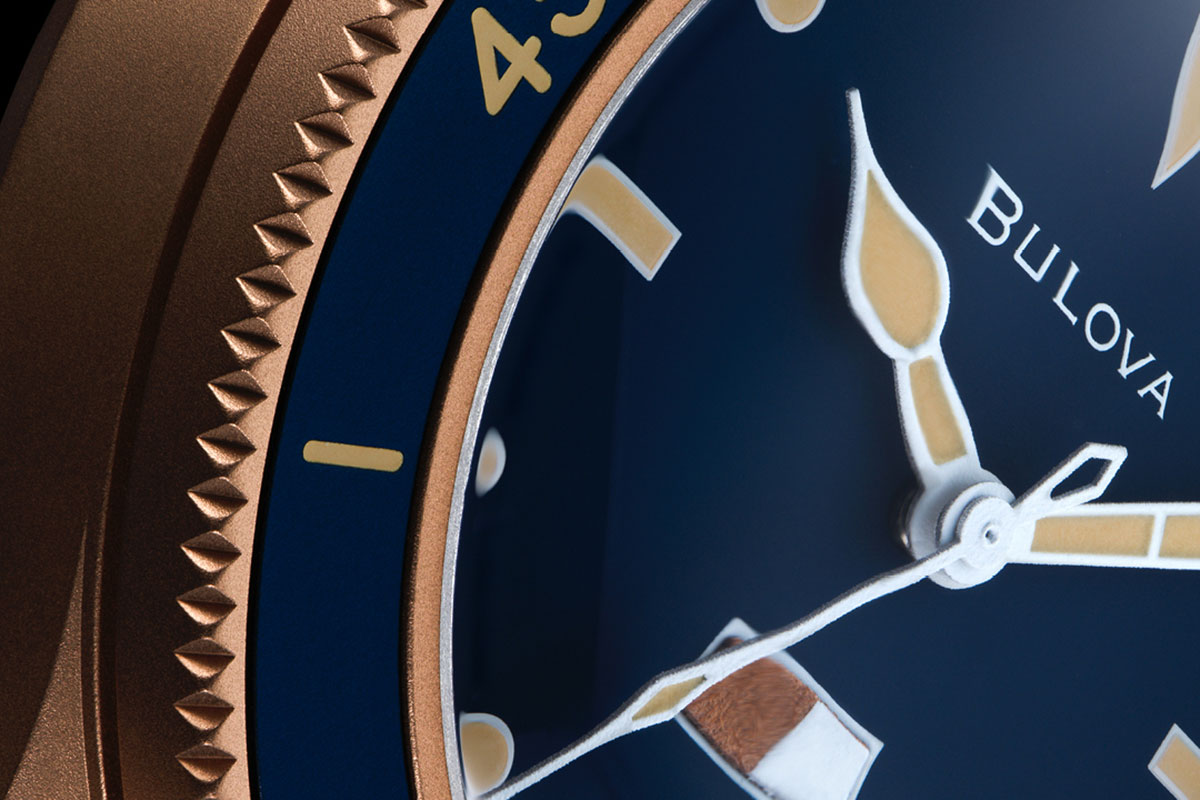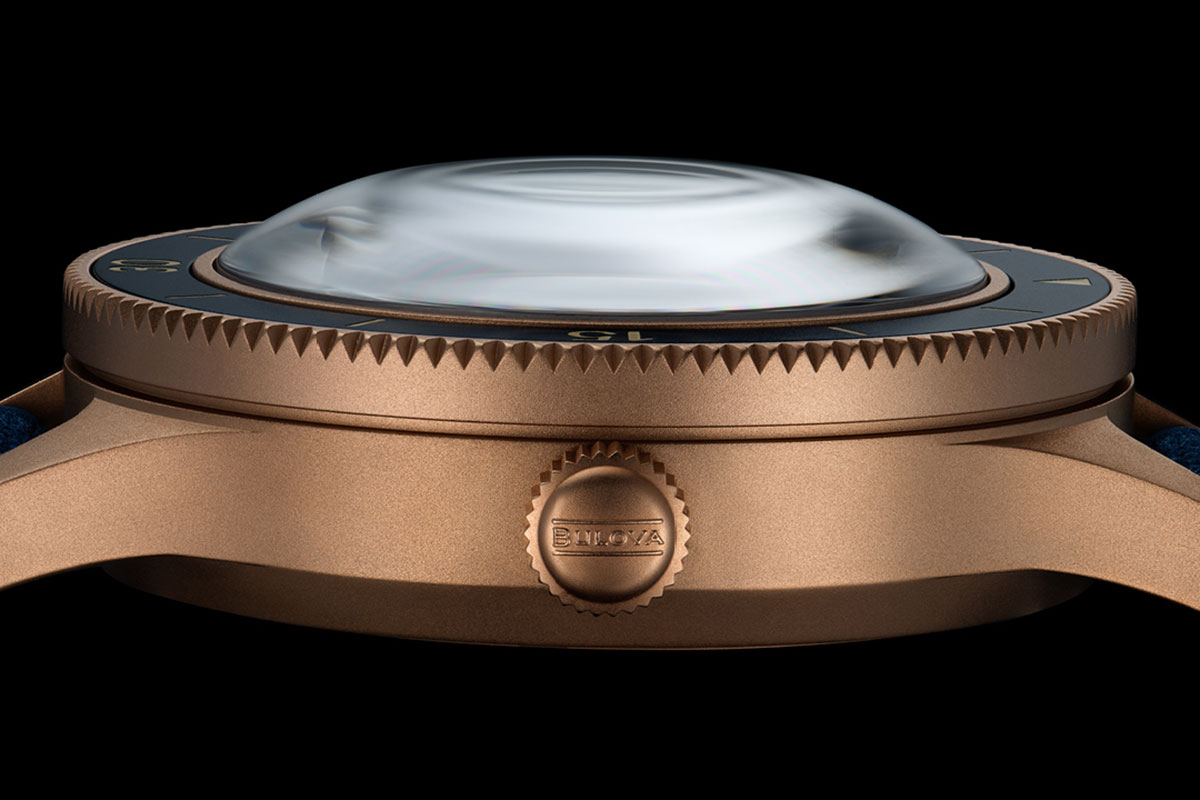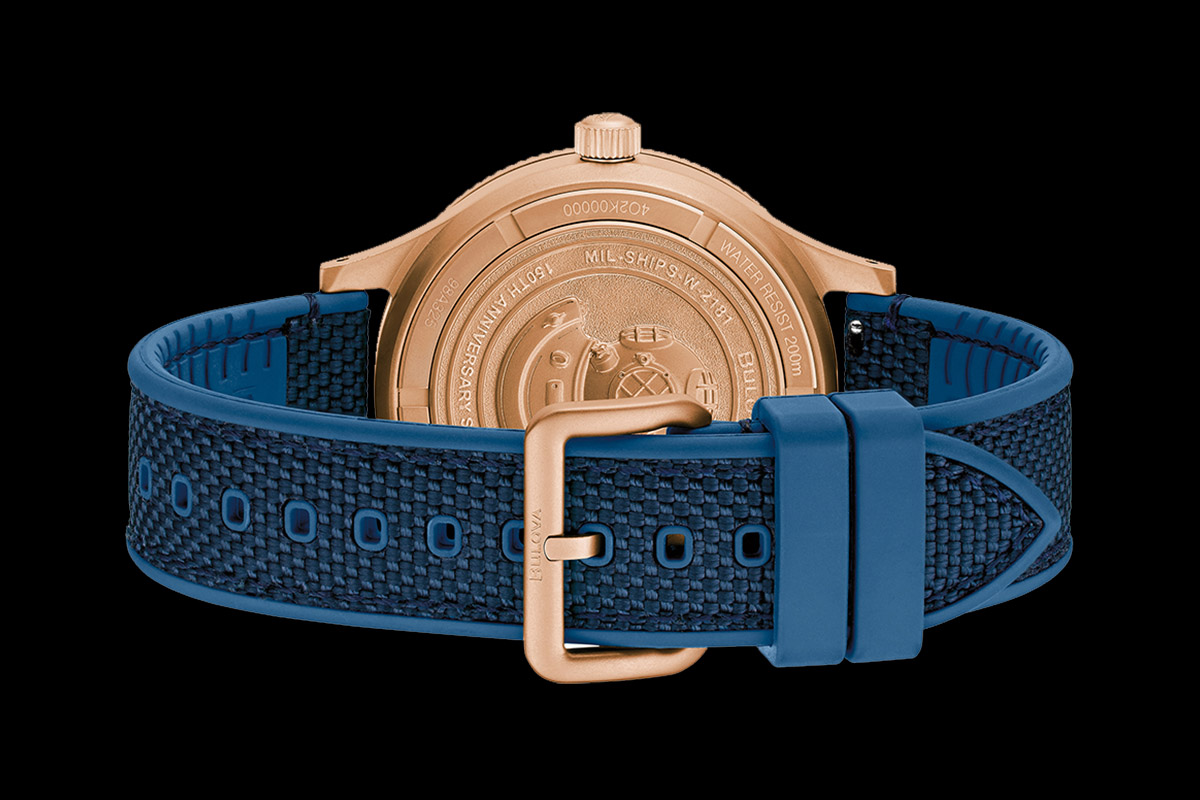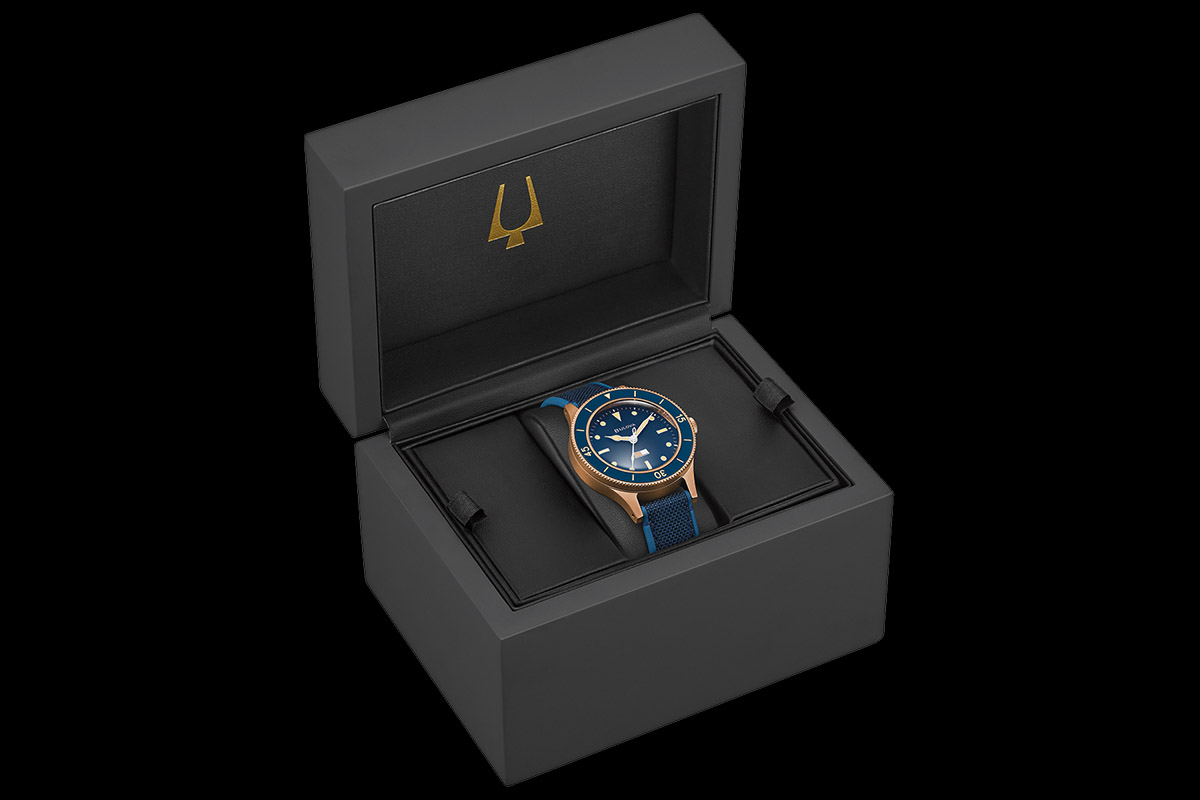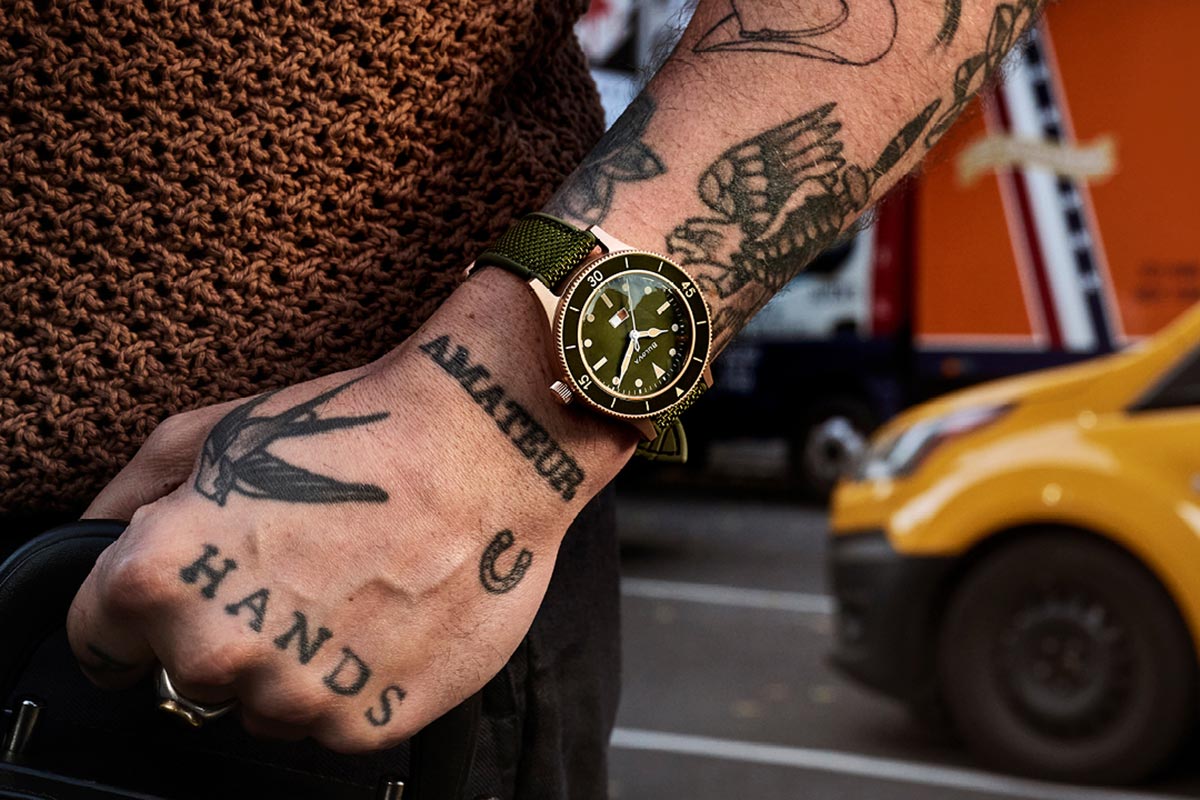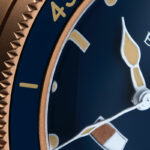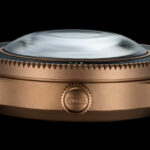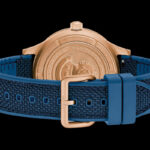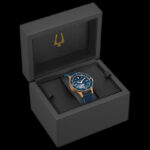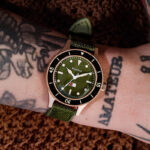This post is also available in: Italian
One of the most exciting trends among watch enthusiasts is collecting timepieces designed to military specifications for use by soldiers and elite units. Bulova’s Mil-Ships collection belongs to this exclusive and highly prized category. Having originally launched the collection in 2021, the company is now relaunching it in two new versions to celebrate its 150th anniversary. It is also a gift for the aforementioned watch enthusiasts, who will appreciate the updated, enriched reference showcasing a history dating back almost 70 years. This is a history that dates back to another era, yet one that still fascinates us today.
It all began in the 1950s − or perhaps even earlier
This is a true story, unlike the many myths surrounding watches. It can be placed in a specific period and is certified by dates and archives, so it is true. In 1955, the United States Navy’s Bureau of Ships issued a tender for a watch to be used by divers working with underwater explosives. Founded in 1940, the Bureau of Ships was primarily responsible for designing, constructing, and maintaining ships, as well as ensuring their stability and seaworthiness.
Alongside the obvious requirement for water resistance, the specifications included luminous hour markers and a rotating bezel. These specifications were identified by the code MIL-W-22176 (SHIPS), after which our Mil-Ships is named. As the US military was legally required to purchase supplies from domestic manufacturers, the options were rather limited. Bulova was an obvious choice as it was based in New York at the time and had been a cornerstone of American watchmaking for decades. In addition, the US Navy commissioned a MIL-SHIPS-W-2181 Submersible that was never marketed. This occurred when the elite EOD (Explosive Ordnance Disposal) and UDT (Underwater Demolition Teams) teams required highly specialised equipment to support their missions during World War II.
There are Mil-Ships and Mil-Ships
The Navy determined that the characteristics of the MIL-SHIPS-W-2181 were suitable for the mission type. Under the guidance of retired General Omar Bradley — one of the most skilled figures of World War II — Bulova created a series of prototypes that were rigorously tested by the Navy Experimental Diving Unit (NEDU) in 1957. Despite their excellent performance in diving and depth tests, however, Bulova decided not to proceed with production in 1958, leaving only 12 prototypes.
The other participant, an importer named Allen Tornek who sold Blancpain watches, had withdrawn from the tender a year earlier. Realising that the Fifty Fathoms was already a reliable diver’s watch, Tornek combined his surname with an anagram of ‘Villeret’, where Blancpain was based, to create a brand called Tornek-Rayville. He added the initials ‘U.S.’ to the watch face to make these reworked Blancpain timepieces appear more American.
At this point, the story becomes rather hazy. However, today Bulova emerges from the fog with an updated version of its Mil-Ships, which generated a lot of interest when it was released four years ago. In my opinion, the updates make this watch more interesting than the 2021 version.
The 2025 Mil-Ships
As always, I will leave most of the technical information to the captions. What I want to highlight here is the work done on the case, which is essentially expressed in two details: the use of bronze and the size of the lugs.
Bronze is a simple enough concept. If the 2021 Mil-Ships was intended to be a very faithful reissue of the 1956 model, it was only natural to choose an stainless steel case. Bronze, however, is the ultimate marine and nautical material, making it perfect for a collection like this with an undeniable subaquatic heritage. Add to that the well-known tendency of bronze to develop an original patina over time and with exposure to air, light, water and sweat, and you have another treat for nerds hunting for uniqueness in every watch.
However, there is more to say about the lugs. In the previous version, they were 16 mm wide. Combined with the 41 mm diameter and 15 mm thickness of the case, this gave the Mil-Ships a slightly ‘macrocephalic’ appearance, bordering on the ungainly. Although the intention was to preserve the original dimensions of the 1950s prototypes, this appearance was not to everyone’s taste. The width has increased to 18 mm in the new version. It’s not a significant change, but those extra 2 mm make a big difference. Having tried the watch on my wrist, I can confirm that the change from 16 to 18 mm benefits the Mil-Ships both visually and in terms of wearability, making the new look much more balanced. Well done to Bulova for listening to feedback from enthusiasts.
The price is reasonable, too
We’ll see if people appreciate the fact that the brand has deviated from the original in terms of both the case material and the colour. It’s no longer black, but a contemporary shade of blue this time, complemented by a forest green version. The design is modern yet still in line with the watch’s military heritage. Personally, I think the blue one looks better when worn. But then, de gustibus… In any case, the choice of colour does not affect the price; both models cost €890.
Bulova is thus celebrating its 150th anniversary with one of the most distinctive models in its history, linked to its rich tradition of military watches. This commemorative edition blends artisanal and historical elements from the military world with modern technology in an intelligent and harmonious way. Even today, the Mil-Ships collection, created in honour of its original purpose, is synonymous with precision, durability, and innovation. These are the qualities that have defined the brand for over a century and a half. And all at a more than affordable price. These days, this can mean the difference between entering a shop and making a purchase or sadly and frustratedly passing by, glancing at the price tags in the window (if there are any…).
